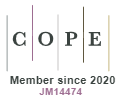Portfolio Development of New Products: A Review of Publications in National Journals
DOI:
https://doi.org/10.5585/gep.v3i1.49Keywords:
Portfolio Management, Product Development, Project Selection.Abstract
The current context of changes leading organizations to improve the products launched in the market to meet the increasingly demanding consumers. In order to offer products successfully, organizations need to select development projects from a portfolio. The research portfolio management can be considered quite extensively abroad, because much of the theoretical framework used by researchers in Brazil comes from international publications. Thus, it is important to diagnose the publications on the subject in the country. Accordingly, this paper aims to carry out a literature review on portfolio management in a restricted scope to develop new products, main focus of this research project. This work is characterized as theoretical and conceptual, with a systematic review of literature, by searching for articles in databases of national periodicals, followed by registration, organization and verification of these publications. The results allowed a stratification on the subject according to the journals identified in the Scielo database, as well as in specific journals. Also analyzed were the industrial sectors linked to publications, being the predominant financial sector, which is not part of the scope of this research. The study identified a paucity of studies related to portfolio management for new products, principally in relation to the application and implementation in organizations in general.References
Archer, N. P.; Ghasemzadeh, F. An Integrated Framework for Project Portfolio Selection. International Journal of Project Management.v.17, n.4, p.207-216, 1999. doi:10.1016/S0263-7863(98)00032-5
Bruni, A.L. et al.A moderna teoria de portfólios e a Contribuição dos mercados latinos na Otimização da relação risco versus Retorno de carteiras internacionais: Evidências empíricas recentes (1996-1997). III Semead, 1998.
Castro, H.C.; Carvalho, M.M. Gerenciamento do portfolio de projetos: um estudo exploratório. Gestão & Produção, v.17, n.2, p. 283-296, 2010. doi:10.1590/S0104-530X2010000200006
Caupin, G.; Knoepfel, H.; Koch, G.; Pannenbacker, K.; Pérez-Polo, F.; Seabury, C. (Eds.) ICB – IPMA competence baseline. Nijkerk, The Netherlands: International Project Management Association, v. 3.0, 2006.
Chen, H. H.; Kang, H. Y.; Xing, X.; Lee, A. H. I.; Tong, Y. Developing new products with knowledge management methods and process development management in a network. Computers in Industry, v.59, p. 242-253, 2008. doi:10.1016/j.compind.2007.06.020
Clark, K. B.; WHeelwright, S.C. Managing New Product and Process Development. The Free Press, New York, 1993.
Cooper, R. et al. Portfolio Management for New Products. Addilson-Wesley Publishing: Reading, 1998.
Cooper, R. G., Edgett, S. J. e Kleinschmidt, E. J. Portfolio Management in New Product Development: Lessons from the Leaders - I. Research Technology Management, v. 40, n. 5, p.16-28, 1997.
Cooper, R. G., Edgett, S.J. e Kleinschmidt, E. J. Portfolio Management for New Products Reading, Massachusetts: Addison-Wesley, 1998.
FAPESP. SciELO no topo de ranking mundial. Disponível em: . Acessado em: 15/06/2011.
IPMA. International Project Management Association.Comparison between ICB and other Project Management Standards.USA: International Project Management Association, 2004.
Kerzner, H. Project management - A Systems Approach to Planning, Scheduling and Controlling, 7.ed. New York: John Wiley & Sons, 2001.
Levine, H.A. Project portfolio management: a practical guide to selecting projects, managing portfolios and maximizing benefits. San Francisco: Jossey-Bass, 2005.
Loch, C.H.; Kavadias, S. Dynamic Portfolio Selection of NPD Programs Using Marginal Returns. Management Science,. v. 48, n.10, p.1227-1241, 2002. doi:10.1287/mnsc.48.10.1227.275
Markowitz, H. Portfolio Selection. The Journal of Finance, v. 7, no 1, 1952. doi:10.2307/2975974
Moreira, R.A. Proposta de um padrão gerencial de gestão de portfólio de novos produtos para indústrias farmacêuticas, 2008. Dissertação (Mestrado em Engenharia de Produção). Belo Horizonte: Universidade Federal de Minas Gerais, 2008.
PMD. Notes for contributors. Disponível em: <http://pmd.hostcentral.com.br/submission.php>. Acessado em: 18/07/2011.
PMI – Project Management Institute. Um Guia do Conjunto de Conhecimento em Gerenciamento de Projetos (Guia PMBOK) - Quarta Edição. Newton Square, PA, USA: Project Management Institute, 2008.
______. The Standard for Portfolio Management. 2 ed. USA: Project Management Institute, 2008.
Rabechini Jr., R., Maximiano, A.C.A. e Martins, V.A. A adoção de gerenciamento de portfolio como uma alternativa gerencial: o caso de uma empresa prestadora de serviço de interconexão eletrônica. Produção, v. 15, n.3, p.416-433, 2005.
Rad, P.F.; Levin, G. Project Portfolio Management – Tools & Techniques.New York, IIL, 2006.
Rozenfeld, H. et al. Gestão de Desenvolvimento de Produtos - Uma referência para a melhoria do processo. São Paulo: Saraiva, 2006.
Rubinstein, M. Markowitz's "Portfolio Selection": A Fifty-Year Retrospective. The Journal of Finance, vol. LVII, 2002.
Temaguide. A guide to technology management and innovation for companies. European Communities: Fundación COTEC para la Innovación Tecnológica, 1998.
Turnbull, P.W. A Review of Portfolio Planning Models for Industrial Marketing and Purchasing Management. European Journal of Marketing, v. 24, n. 3, p. 7-22, 1989. doi:10.1108/03090569010000629






